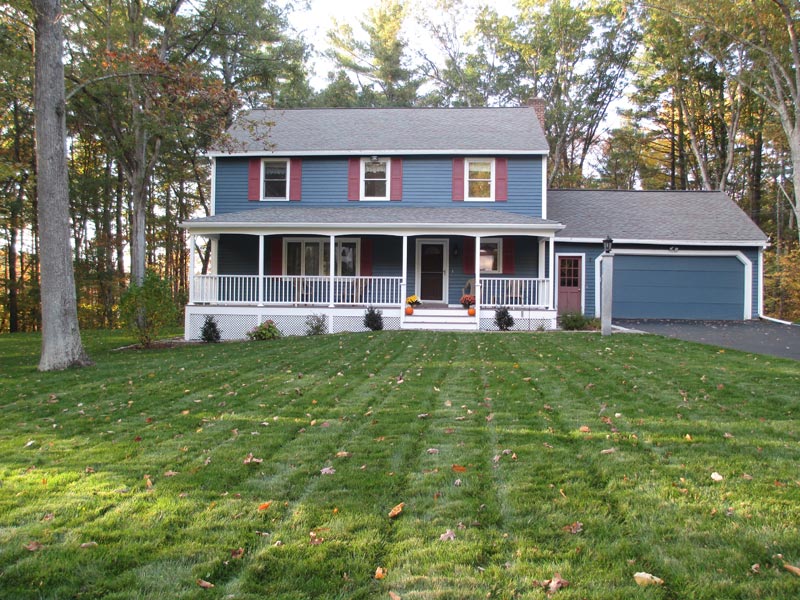This thread is intended to document our 2018 Front Lawn Renovation. Before getting in to the log of what we're doing, though, a little background is probably in order...
As of 2015, we had completed renovations of all of our lawn areas over the course of the prior 3 years:
In 2017, we commenced a war on poa trivialis, which is hopefully now reaching the turning point with this fall's renovation of the front lawn!
We've been planning this front lawn renovation for about a year. Our desired result is a front lawn of dark green, compact Kentucky bluegrass which self-repairs from winter damage and is free of weeds, particularly poa trivialis.
We actually have three different renovation projects going on this year:
1 - Front lawn renovation to a 50/50 blend of Bewitched and Prosperity Kentucky bluegrass on a total of about 5300sqft. The prior front lawn had been a northern mix, which got us started on our lawn care hobby, but in which we were starting to have trouble with poa trivialis.
2 - Side lawn patch repairs of about 350sqft to the Bewitched KBG monostand. The bare spots were the result of a combination of (a) killing off poa trivialis patches and (b) transplanting sod to repair other poa trivialis patches in other areas of the lawn.
3 - Front driveway-side lawn experiment to see if the fine fescue in a northern mix can be mostly eliminated by the use of Tenacity at 8oz/acre dosages. We are also experimenting with a KBG overseed into this northern mix at the same time even though my past experience with overseeding KBG into a dense northern mix has always been ineffective.
We'll talk about each of these projects in this thread. Hopefully it won't be too confusing to have the different mini-projects interspersed. Please feel free to provide encouragement, ask questions, or hurl ridicule at our attempts, odd approaches, and mistakes!
Below: Front lawn on 1-year anniversary (9 Oct 2014) after prior renovation (fall 2013).
![Image]()
As of 2015, we had completed renovations of all of our lawn areas over the course of the prior 3 years:
- 2013 Front Lawn Renovation (Northern Mix)
- 2014 Back Lawn Renovation (Fine Fescue / Prosperity KBG Mix)
- 2015 Side Yard Renovation (Bewitched KBG)
In 2017, we commenced a war on poa trivialis, which is hopefully now reaching the turning point with this fall's renovation of the front lawn!
We've been planning this front lawn renovation for about a year. Our desired result is a front lawn of dark green, compact Kentucky bluegrass which self-repairs from winter damage and is free of weeds, particularly poa trivialis.
We actually have three different renovation projects going on this year:
1 - Front lawn renovation to a 50/50 blend of Bewitched and Prosperity Kentucky bluegrass on a total of about 5300sqft. The prior front lawn had been a northern mix, which got us started on our lawn care hobby, but in which we were starting to have trouble with poa trivialis.
2 - Side lawn patch repairs of about 350sqft to the Bewitched KBG monostand. The bare spots were the result of a combination of (a) killing off poa trivialis patches and (b) transplanting sod to repair other poa trivialis patches in other areas of the lawn.
3 - Front driveway-side lawn experiment to see if the fine fescue in a northern mix can be mostly eliminated by the use of Tenacity at 8oz/acre dosages. We are also experimenting with a KBG overseed into this northern mix at the same time even though my past experience with overseeding KBG into a dense northern mix has always been ineffective.
We'll talk about each of these projects in this thread. Hopefully it won't be too confusing to have the different mini-projects interspersed. Please feel free to provide encouragement, ask questions, or hurl ridicule at our attempts, odd approaches, and mistakes!
Below: Front lawn on 1-year anniversary (9 Oct 2014) after prior renovation (fall 2013).




















































